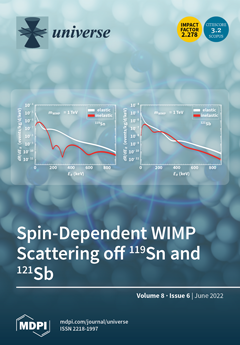Through the relationship between dispersion measures (DM) and redshifts, fast radio bursts (FRBs) are considered to be very promising cosmological probes. In this paper, we attempted to use the DM-z relationship of FRBs to study the helium abundance (
) in the universe. First, we used 17 current FRBs with known redshifts for our study. Due to their low redshifts and the strong degeneracy between
and
, however, this catalog could not provide a good constraint on the helium abundance. Then, we simulated 500 low redshift FRB mock data with
to forecast the constraining ability on
. In order to break the degeneracy between
and
further, we introduced the shift parameters of the Planck measurement
as a prior, where
represents the baryon density parameter, and
R and
correspond to the scaled distance to recombination and the angular scale of the sound horizon at recombination, respectively. We obtained the standard deviation for the helium abundance:
. Finally, we considered 2000 higher redshift FRB data with the redshift distribution of
and found that the constraining power for
would be improved by more than 2 times,
, which indicates that the FRB data with high redshift can provide a better constraint on the helium abundance. Hopefully, large FRB samples with high redshift from the Square Kilometre Array can provide high-precision measurements of the helium abundance in the near future.
Full article





